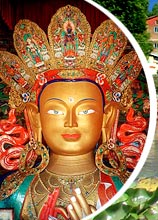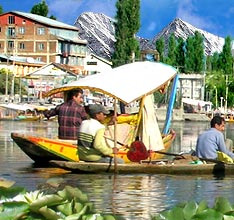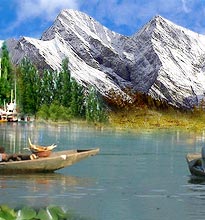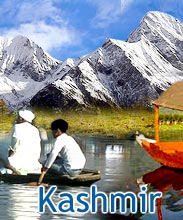 Kashmir cuisine is quite famous for the gracious use of spices like cinnamon, cardamom, cloves, saffron, etc. Spices used in Kashmiri cuisines give special taste and aroma to the food. However, Kashmiri rice forms an important part of the traditional food of Kashmir, striking a balance with the spicy Kashmiri dishes. Non-veg, consisting of mutton, chicken, fish, etc forms an important part of Kashmiri cuisine. The routine cooking in Kashmir is a combination of non-veg and vegetables in the same dish.
Kashmir cuisine is quite famous for the gracious use of spices like cinnamon, cardamom, cloves, saffron, etc. Spices used in Kashmiri cuisines give special taste and aroma to the food. However, Kashmiri rice forms an important part of the traditional food of Kashmir, striking a balance with the spicy Kashmiri dishes. Non-veg, consisting of mutton, chicken, fish, etc forms an important part of Kashmiri cuisine. The routine cooking in Kashmir is a combination of non-veg and vegetables in the same dish.Non-vegetarian dishes consist of an important part of not only the diet of a Kashmiri, rather a banquet (wazwan) also. Considered a sign of extravagant hospitality, non-vegetarian dishes dominate in an official feast (wazwan). A typical wazwan meal consists of not more than one or two vegetarian dishes. Kashmir cuisine does not pay much attention to sweets. Instead, an important part of the meal is Kahva or green tea, used to wash down a meal. Traditionally, food in Kashmir was eaten by hands, without any spoons, forks or knives. Have a look at some of the popular vegetarian and non-vegetarian dishes of Kashmir and don't miss to relish the delicacies of Kashmir valley on your trip.
Dum-aloo: Potatoes, roasted and cooked in a curd-based sauce.
Chaman: Paneer (cottage cheese), fried and cooked in thick gravy.
Rista: Balls made of minced meat, cooked in gravy.
Seekh kababs: Chicken or mutton marinated in spices and grilled on skewers.
Tabak Maz: Fried flat pieces of meat (cut from the ribs).
Roganjosh: Meat cooked with a liberal amount of spices.
Yakhni: Mutton cooked with curd as a base.
Gushtaba: Balls made of finely minced meat, cooked in thick fresh curd gravy. It is the last item to be served in a traditional wazawan.
During the earlier days, Wazwan used to symbolize a feast of the kings. It consisted of some of the most unique, detailed and complex delicacies of meat and a number of other preparations. It used to comprise of thirty-six courses, with approximately 15-30 consisting of meat preparations. The preparation of the meal used to be the responsibility of Vasta Waza or the head chef, with a number wazas (chefs) to assist him.









